This piece draws attention to the rising safety risks for workers due to climate change, especially heat related risks and the policies that could help protect workers.
This publication compiles seven lessons for small business prospecting, recruitment, and ongoing engagement. The lessons outlined in this tool are based on our experience working with Pacific Community Ventures and workforce partners to conduct job quality-focused business advising pilots with small businesses across the country. Although there is no one-size-fits-all approach to developing relationships with employers, we have found that asking lots of questions and tailoring engagement to the local context is key.
This article summarizes “Worker Power and the National Labor Relations Act,” an Opportunity in America event EOP hosted in 2022 to explore how the NLRA could be updated and strengthenedt to support workers’ right to organize and join a union.
This article discusses the growing use of subcontracting work in the tech industry and the negative consequences this “fissuring” has had on job quality for workers.
In this event, panelists discuss the role that employers, workers, government, philanthropy, and others can play in shaping how workplace technology is developed and deployed. How does technology affect job design? How can investments in both workers and technology improve business performance and increase employee retention and engagement? How can workers be engaged to help shape how technology is used? And what can we learn from human-centered design?
This guide to conducting worker focus groups posits amplifying worker voice as an equitable solution for reducing turnover. It was developed as part of the Economic Opportunities Program’s Reimagine Retail job quality research, in response to growing recognition of the importance of listening to workers. The focus group guide delves into six topics related to highlighting worker voice, which include building the business case to employers, developing interview guides, what to do with your interview data, and pandemic considerations. This tool may be helpful for employers looking to use worker expertise and engagement to strengthen job quality, equity, and the business bottom line. Workforce development and worker advocacy organizations may also find it helpful to share these tools with employers in their networks.
This tool provides information about ALICE households, an acronym for Asset Limited, Income Constrained, and Employed. These are households that earn above the Federal Poverty Level but not enough to afford their most basic needs, including housing, food, transportation, and health care. The tool provides a national overview and state- and county-level information about the percentage of ALICE households. Users can explore data by household factors including age, family composition, and race/ethnicity. United for ALICE has also published research focused on financial hardship in Black households. This tool has relevance for policymakers and employers focused on policies and practices related to wages. Organizations who support workers or employers may also find this tool useful.
This article investigates the impact of employee ownership on business and worker outcomes, including links to improved productivity, pay, job stability, and firm survival. The article dives further into the effects and causation relationship, as well as the challenges presented by employee ownership.
This shared definition of job quality was created collaboratively by leaders in business, labor, workforce development, and policy as part of the Good Jobs Champions Group, an initiative of the Aspen Institute Economic Opportunities Program and the Families and Workers Fund. The definition provides a framework for understanding job quality, dividing the components of a good job into three categories: economic stability, economic mobility, and equity, respect & voice.
Despite laws like the Occupational Safety and Health Act (OSH), there remain significant challenges to protecting workers in traditionally dangerous occupations, such as construction and agriculture, as well as in industries like retail and health care. The COVID-19 pandemic not only underscored the need for worker protections across sectors; it also demonstrated the need for the government to play a role in setting standards, monitoring workplaces, enforcing regulations, and educating and training employers and employees on risks and risk prevention. The rise in temporary work, the expansion of the gig economy, and the use and misclassification of independent contractors who are excluded from OSH have all created additional challenges in protecting workers. In this event, panelists discuss what we can learn from the history and implementation of OSH, and how we can address these inequities to build a safer workplace for all workers.
